READY TO GET STARTED?
REQUEST A FREE ESTIMATE
Fill out the form below or call (888) 466-7849 for a free, no-obligation estimate.
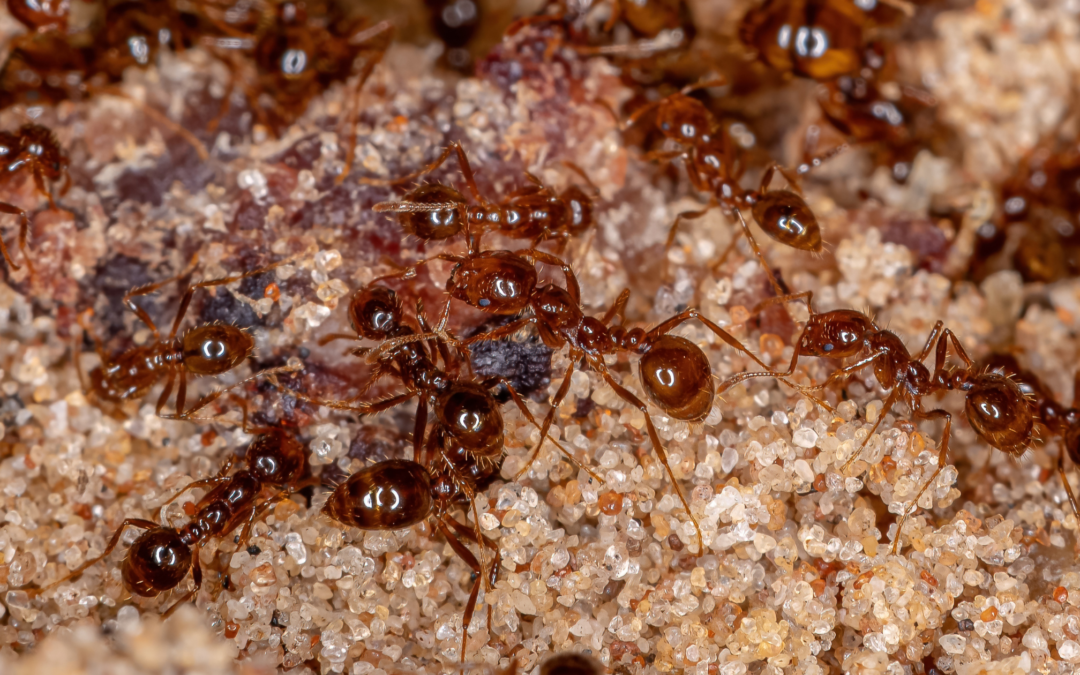
Fire ants, with their fiery stings and relentless mounds, can quickly turn your yard into a battleground. For Georgia homeowners, dealing with these aggressive pests is an ongoing challenge. However, with the right strategies and tools, you can regain control of your outdoor space and enjoy it without fear of fire ant attacks. In this guide, we’ll explore the signs of fire ants, the dangers they pose, what to do if you’re bitten, and most importantly, how to effectively eliminate them from your yard.
Identifying a fire ant infestation is crucial for prompt action. Look out for telltale signs such as:
Beyond their painful stings, fire ants pose several risks:
If you or someone else is stung by a fire ant, follow these steps:
Effective fire ant control requires a multi-faceted approach. Here are some strategies to consider:
Once you’ve eradicated fire ants from your yard, take steps to prevent future infestations:
In conclusion, controlling fire ants in your Georgia yard requires diligence and a combination of tactics. By identifying signs of infestation, understanding the dangers they pose, and implementing effective control measures, you can reclaim your outdoor space from these troublesome pests. For fast-acting and reliable fire ant control, trust the expertise of a professional pest control company near you to safeguard your home and family.
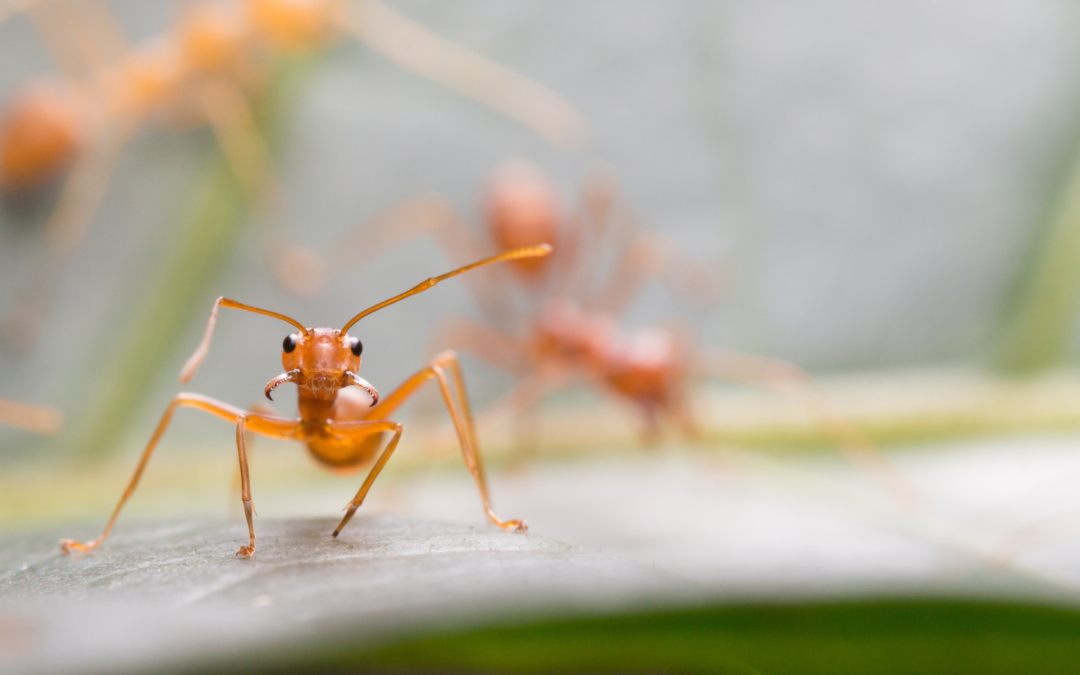
Fire ants might be small, but they are mighty. They can leave a very painful and unwanted welt on your skin if they feel threatened. Don’t let them ruin your summer fun; read more and discover how you can avoid and prevent these pests.
Luckily fire ant mounds are usually easy to spot; so if you find one on your property, it’s best to take care of it as soon as possible. These pests are known for their fierce survival methods in harsh conditions. They can also find shelter in or near HVAC units and electrical boxes, so be aware when working in these areas of your home.
If they do find shelter in electrical boxes, it’s important to remove them as soon as you can, as they can cause damage to wire and equipment.
The best ways to keep these pests out of your yard for the summer is to:
If you need more support, reach out to your local pest control company. These professionals will provide you with a comprehensive fire ant control and prevention plan for fire ants and other summer pests.
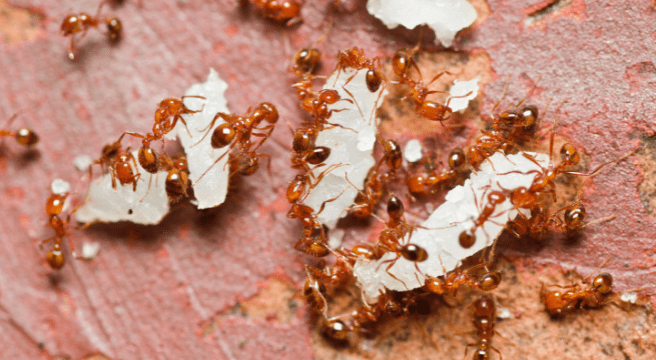
Red Imported Fire Ants (RIFA) have been around for decades, originally coming from South America and first arriving in the U.S. somewhere between 1933 and 1945. They are commonly found in the southern states ranging from Texas to Florida. These pests can be aggravating and quite painful if they bite. It helps to know when they are most active and how to deal with them.
Red imported fire ants are similar in appearance to regular black ants but give off a dark reddish-brown color. They measure 1.6mm to 5mm in length.
Fire ants are known to search for food in warmer temperatures, especially in the range between 72°F and 96°F. They are mostly active during the summer and fall months but can emerge as early as March. Their mounds can be found in yards, stumps, rotting logs, and even around playgrounds. Fire ant mounds can house up to 200,000 individuals and can be up to two feet high and three feet across.
Due to their habitat, they can be a threat to people who enjoy being outside. Although commonly referred to as a bite, they actually sting. Red ants are known to sting humans who disturb a mound. The sting of a red imported fire ant is painful, and the results of the sting are raised welts that can become a white pustule. Often a person will find that they have been stung multiple times by different ants. The biggest threat is if the person has an allergy to insect stings.
If you end up finding these nests or RIFAs roaming in your home, contact a professional local pest control company who can help set up a treatment and control plan for your home. Since RIFAs are known to have a very painful bite, it’s important to remove them as soon as possible.
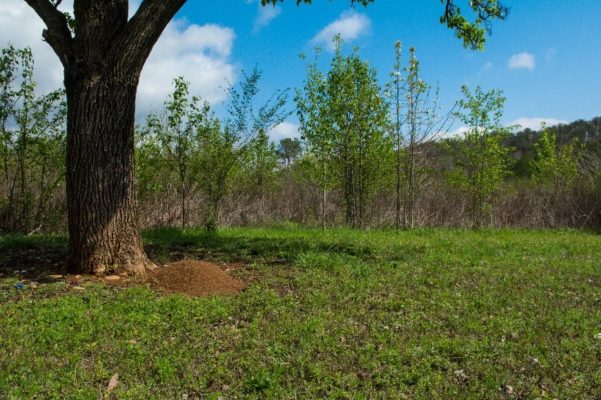
If you’ve ever noticed dirt mounds throughout your yard, you might be assuming that they are just ant mounds. But, if you look closer, certain mounds could be home to a completely difference species. Digger bee mounds could easily be confused with ant mounds, but truthfully, the two species couldn’t be more different.
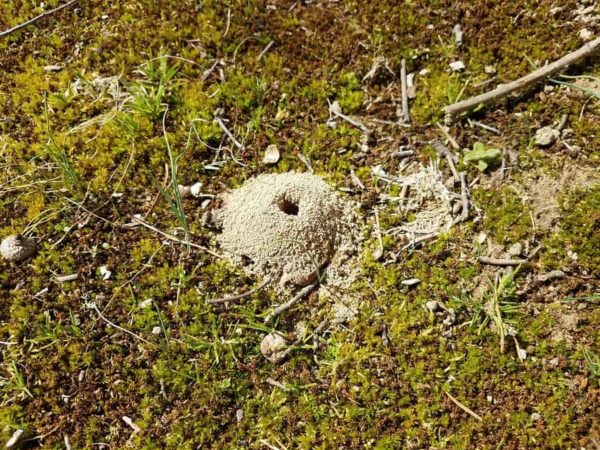
Digger bees are ¼ to ½ inch long, and depending on their species can be dark, shiny metallic, often with yellow, white, or rust-colored markings. What’s unique about digger bees from other bees is they tend to build their nest about 6 inches deep under the ground. The adult female digger bees live in these mounds underground while the male digger bees dig to the surface of the soil creating a pathway for the females to emerge during springtime.
Digger bee mounds can usually be found in areas of your yard where the grass is sparse, such as a dry or shady area. They typically build their nests close together, creating a cluster of several small mounds.
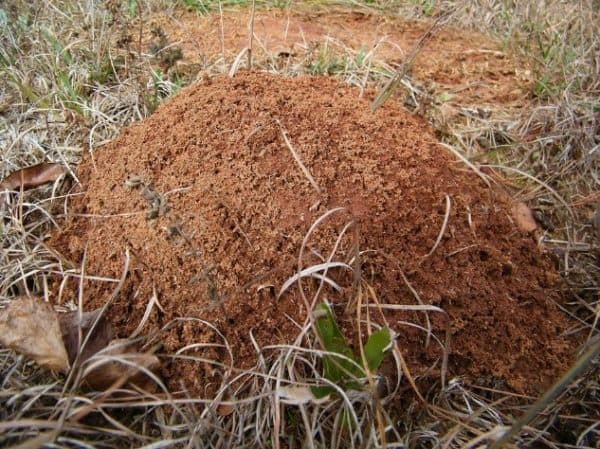
Fire ants can vary in different sizes but have a dark red body color that can range from reddish brown to reddish black, depending on their species. Fire ants do have a stinger and when used can give off a painful sting.
Fire ant mounds are usually raised where you can easily spot them in your yard. The mounds are also dome-shaped and can range from two- to four-square feet in size. Fire ant colonies can be found to have an average of 80,000 worker ants. They typically like to avoid darkness and shade; therefore, they will build their mounds in sunny areas of yards, rather than in shaded areas.
From above, you can see just how different these two species are and how different their habitat is. While digger bees like to build their mounds underground and in shaded areas, the fire ant can be seen building theirs visibly and in sunny areas of the yard. If you believe you have either of these pests in your yard, it’s best to contact a professional pest control company who can help identify and provide treatment plans.
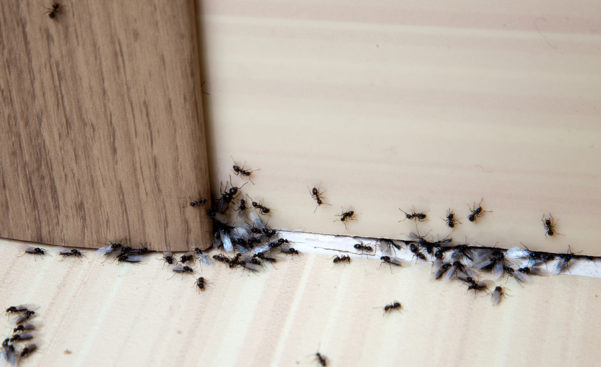
Ants have been named the #1 nuisance pest in the United States. Ants are social insects that live in colonies. They enter our homes looking for food and shelter. Ants primarily look for foods that are sugary and sweet or greasy and protein-based. Once they find food, they leave a pheromone trail behind that other ants will follow.
There are over 700 species of ants in the United States. At least 20 of these species are known to infect homes and other structures. There are several species of ants that are common to our area. The 5 most common are:
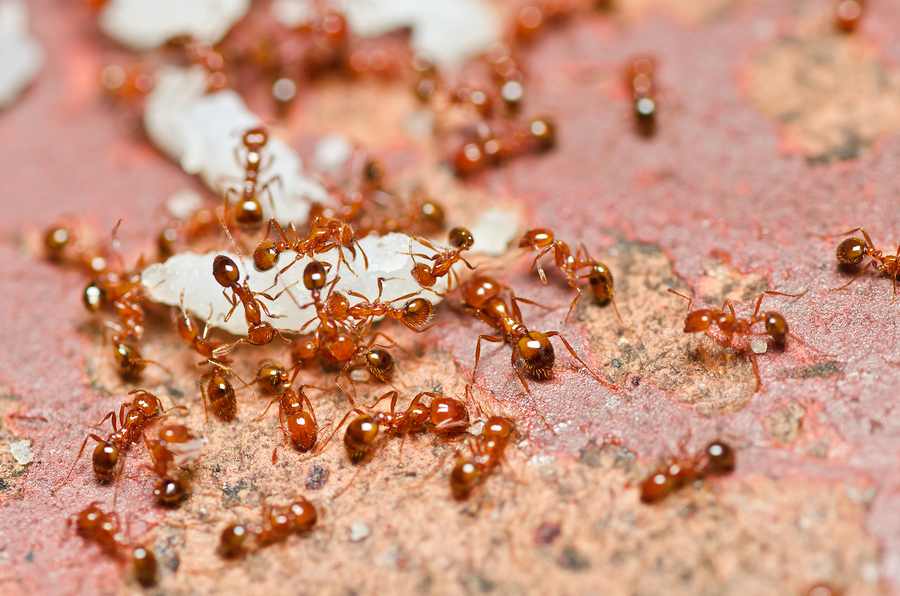
Fire ants build large, raised mounds. They prefer to nest in open, disturbed areas. They commonly nest in yards, fields, and roadsides. Fire ants are known to devastate local insect populations and small wildlife. They are also known to eliminate ground nesting bird species because they attack their newly hatched nestlings. Fire ants cause painful stings when they bite and will bite humans when threatened.
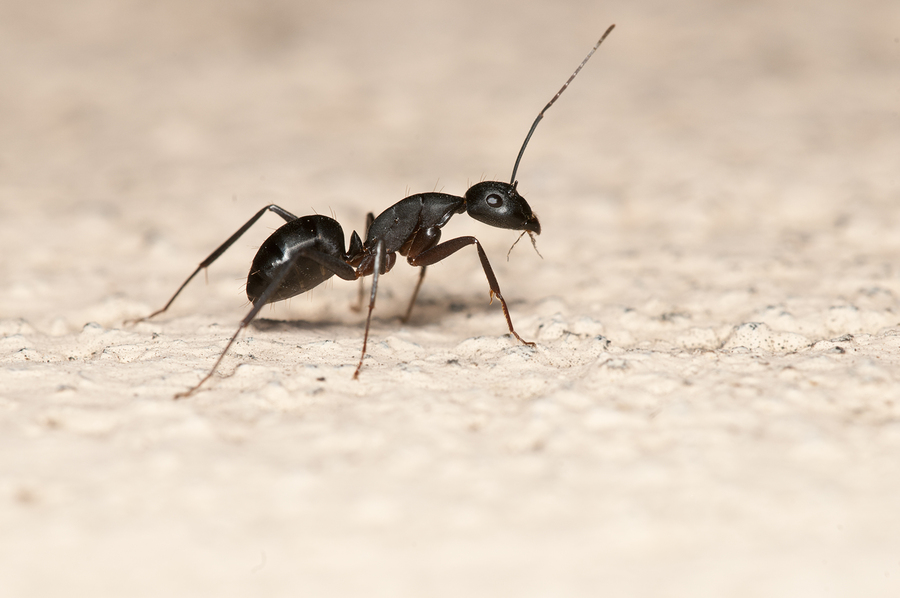
Carpenter ants are black in color. They are nocturnal and will exit their nests about 15 minutes after sunset in large numbers. Carpenter ants will invade kitchens in the summer months in search of food and water. They will invade structures if moisture is present. Carpenter ants can be very destructive to homes.
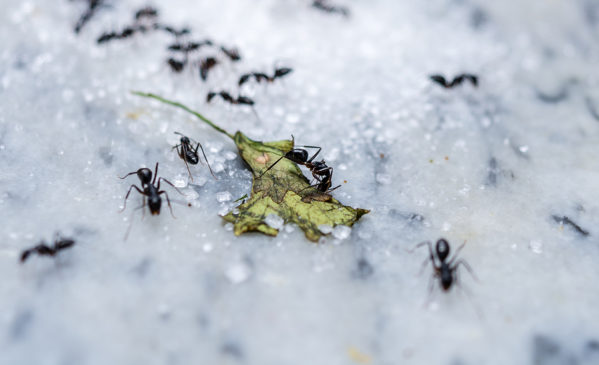
Argentine ants are light brown in color. They can easily squeeze through small cracks and holes. Argentine ants are known to set up colonies in the ground, in concrete walls, between boards and timbers, and among the belongings in your home. These ants are commonly seen in homes and will enter them in search of food and water. They are especially common during dry or hot weather or after a heavy rainfall. Argentine ants exhibit strong trailing behavior and can exist in high numbers. They move very quickly and are named among the world’s 100 worst animal invaders.
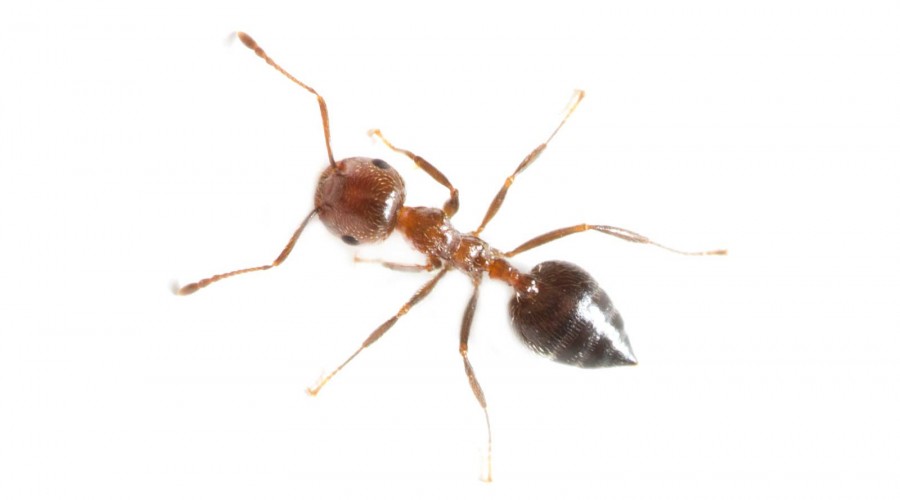
Acrobat ants are dark colored with a heart shaped abdomen that they will hold up in the air like a flag when disturbed. They will nest inside decaying wood. Acrobat ants form single file trails and leave behind small sawdust piles that are similar to those of carpenter ants. These ants produce a mild sting when they bite. Acrobat ants may move into your attic to incubate their eggs and will tunnel into water damaged wood.
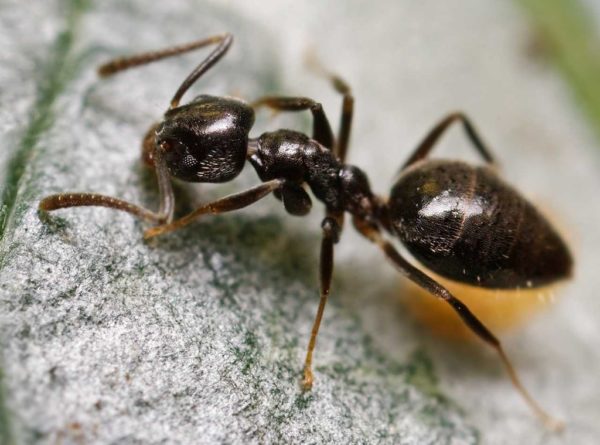
Odorous house ants are dark colored and give off a strong rotten coconut smell when they are crushed. They exist in large numbers where there is plenty of moisture. They form trails similar to Argentine ants. Odorous house ants are one of the most difficult pests to get rid of from structures. They will often establish their colonies in earth filled porches and block walls.
Since ants are one of the most difficult pests to get rid of, what can you do to keep them from invading your home in the first place? Check out these tips for keeping the ants out of your personal space.
Eliminating ants can be an uphill battle. If they aren’t properly treated, the infestation can continue to grow despite your best efforts. Some ants like carpenter ants can cause serious property damage. Other ants like fire ants can pose a serious health threat to your family. Other species, while not necessarily a threat to your family, can still contaminate your food. If you suspect you have an ant problem call a professional pest control company. A professional can identify what species of ant you have which is the first step in eliminating these nuisance pests. They can also find the entry points and provide you with a thorough and comprehensive treatment plan.